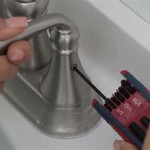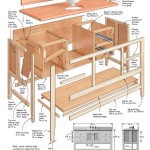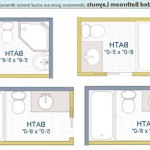DIY Cement Bathroom Sink Cabinet Ideas
Adding a touch of industrial chic to your bathroom can be as simple as crafting your own cement bathroom sink cabinet. This DIY project offers a unique blend of functionality and style, allowing you to create a statement piece that complements your bathroom's aesthetic and reflects your personal taste. Whether you're a seasoned DIY enthusiast or a novice looking for a rewarding project, building a cement sink cabinet is an achievable feat with the right guidance and materials. This article explores the process of building a cement bathroom sink cabinet, offering practical tips and ideas to help you embark on this creative endeavor.
Choosing the Right Materials
The foundation of a successful DIY project lies in selecting the right materials. For a cement bathroom sink cabinet, you'll need a combination of materials that ensure both structural integrity and visual appeal. Here's a breakdown of essential materials:
- Cement mix: Opt for high-quality concrete mix designed for countertops or similar applications. This ensures durability and resistance to moisture and stains.
- Formwork: This is the mold that shapes your sink cabinet. Plywood, MDF, or even repurposed wooden crates can be used, depending on the size and design of your cabinet. Ensure the formwork is sturdy and airtight to prevent leaks.
- Release agent: This prevents the cement from sticking to the formwork, making it easier to remove the finished cabinet. Common options include wax or vegetable oil.
- Reinforcement: Wire mesh or fiberglass mesh adds strength and prevents cracking in the cement. It should be embedded within the concrete mix.
- Sink: Choose a sink that complements the style and size of your cabinet. Consider materials like porcelain, ceramic, or stainless steel.
- Hardware: This includes hinges, handles, and any additional fittings required for your cabinet doors or drawers.
Step-by-Step Guide to Building Your Cement Sink Cabinet
Once you have gathered the necessary materials, you can begin the construction process. Follow this step-by-step guide to create your own unique cement bathroom sink cabinet:
- Design and Preparation: Determine the size and shape of your cabinet, considering the dimensions of your sink and bathroom space. Sketch out a plan and create a detailed blueprint for reference. Prepare the formwork by ensuring its structural integrity and sealing any gaps or cracks. Apply a release agent to all surfaces that will come into contact with the cement.
- Mixing the Cement: Follow the instructions on the cement mix packaging for the correct water-to-cement ratio. Mix thoroughly to achieve a smooth and consistent consistency. Ensure the mix is not too wet or too dry. Use a mixer or a trowel for mixing.
- Pouring the Cement: Carefully pour the cement mixture into the formwork, working in layers. Use a trowel to spread the cement evenly and pack it firmly to eliminate air pockets. For a smoother finish, you can use a float to smooth the surface.
- Reinforcement and Finishing: Embed the reinforcement mesh within the cement layers. Allow the cement to partially cure before incorporating the sink. Position the sink securely within the formwork, ensuring it is level and centered. Finish the cement surface according to your desired aesthetics. You can use various techniques like trowelling, sanding, or painting to achieve a unique look.
- Curing and Demolding: Allow the cement to cure for the recommended time, typically 24 to 48 hours. This ensures the cement sets completely and gains strength. Once cured, carefully remove the formwork. You may need to gently tap the formwork to release it from the hardened cement.
- Final Touches: After removing the formwork, smooth out any rough edges or imperfections. Install the hardware, including hinges, handles, and any other fittings. Seal the sink cabinet to protect it from moisture and stains. Apply a sealant based on the type of cement and desired finish.
Creative Ideas and Variations
The beauty of a DIY project is its flexibility. You can personalize your cement sink cabinet by implementing creative ideas and variations. Consider the following suggestions:
- Unique Forms: Explore different formwork designs beyond simple rectangular shapes. Construct curves, angles, or even incorporate natural elements like river rocks or stones into the formwork for a more organic aesthetic.
- Color and Texture: Add color to your cement mix by incorporating pigments during mixing. Create texture by pressing stones or other materials into the wet cement. Experiment with different finishes like polished, brushed, or distressed to create a unique look.
- Storage Options: Integrate storage solutions like shelves, drawers, or compartments into your cabinet design to maximize functionality. These can be built into the formwork or added after the cement has cured.
Building a cement bathroom sink cabinet is a rewarding DIY project that offers a chance to create a unique and functional piece for your bathroom. By carefully choosing materials, following the step-by-step guide, and incorporating creative ideas, you can craft a custom cabinet that reflects your style and adds a touch of industrial elegance to your bathroom.

Diy Concrete Vanity Heather Bullard

Diy Bathroom Vanity W Built In Concrete Sink Countertops

How To Create Poured Concrete Vanity Tops And Shower Curbs Content Co

Stylish And Practical Small Bathroom Storage Ideas

Custom Built In Bathroom Vanity With Microcement Jenna Sue Design

Diy Concrete Countertop With An Integral Sink Shelterness

Concrete Bathroom Sinks That Make A Strong Statement Without Any Fuss

Diy Concrete Counter Overlay Vanity Makeover

Diy Concrete Counter Overlay Vanity Makeover
:strip_icc()/102130266-3174ac7d31314c7abfc80a1b65a11dd6.jpg?strip=all)
18 Luxurious Bathroom Countertop Ideas For All Budgets







